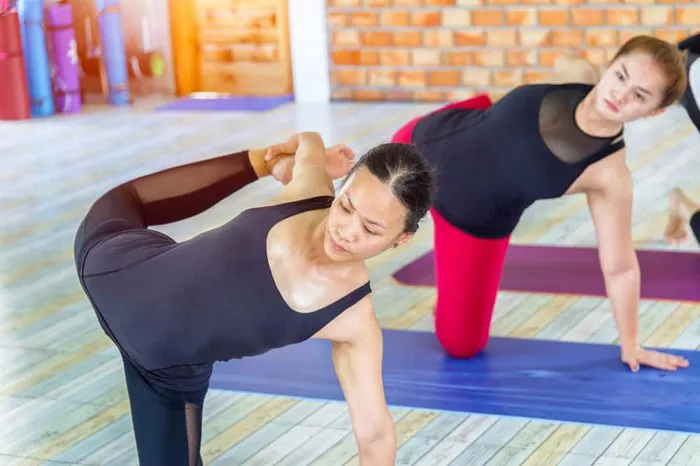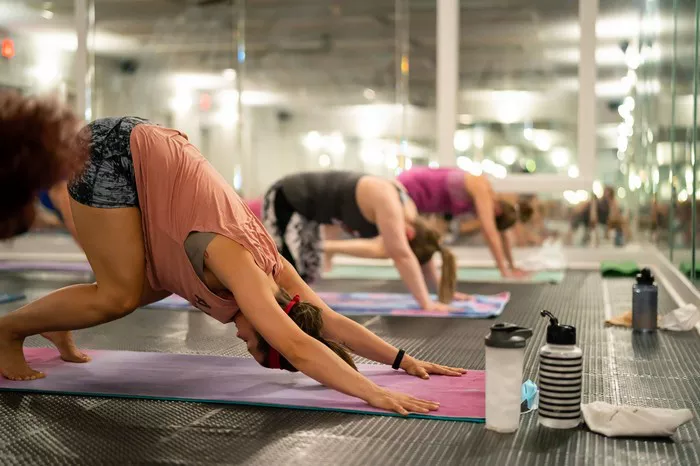Before practicing Kriya Yoga, thorough preparation is key. Mentally, calm your mind and set clear intentions. Physically, ensure comfort, assess health, and wear suitable clothes. Create a quiet, sacred practice space. Gain knowledge by researching and learning from qualified teachers. Also, let go of expectations, cultivate a positive attitude, establish a regular schedule, and choose appropriate pre – practice eating habits for an effective practice.
Cultivating the Right Mental State: A Foundation for Practice
Calming the Mind’s Turbulence
Before delving into Kriya Yoga, it is essential to calm the mind. The practice demands focus and concentration, and a restless mind can hinder progress. Engage in simple relaxation techniques such as deep breathing exercises outside of the formal Kriya Yoga practice. Sit comfortably, close your eyes, and take slow, deep breaths. Inhale deeply through your nose, filling your abdomen and then your chest, and exhale slowly through your mouth. This simple act helps to reduce stress and anxiety, creating a more receptive mental environment for Kriya Yoga. By quieting the mind, you can better connect with the spiritual and energetic aspects of the practice.
Setting Clear Intentions
Establishing clear intentions is crucial before starting Kriya Yoga. Reflect on why you are drawn to this practice. Are you seeking inner peace, spiritual growth, or physical well – being? Your intentions will serve as a guiding force throughout your Kriya Yoga journey. Write down your intentions in a journal. For example, if your goal is to reduce stress, you might write, “I practice Kriya Yoga to find a sense of calm and tranquility in my daily life.” Keeping your intentions in mind during practice helps maintain focus and motivation, ensuring that each session contributes to your overall spiritual and personal development.
Preparing the Body: A Temple for Spiritual Practice
Ensuring Physical Comfort
Physical comfort is a key consideration before Kriya Yoga. Wear loose, comfortable clothing that allows for easy movement and does not restrict your breathing. Avoid tight – fitting clothes or anything that may cause discomfort during the practice. Additionally, ensure that your body is well – rested. Get enough sleep the night before your practice session so that you are not fatigued. If possible, engage in some light stretching or gentle yoga poses before starting Kriya Yoga to warm up the body and increase flexibility. This helps prevent muscle strains and makes it easier to sit in the required postures for extended periods.
Assessing Physical Health
It is important to assess your physical health before beginning Kriya Yoga. If you have any pre – existing medical conditions, especially those related to the heart, lungs, or spine, consult with your doctor. Kriya Yoga involves specific breathing and postural techniques that may need to be adjusted based on your health condition. For instance, if you have a respiratory problem, certain pranayama techniques might need modification. Understanding your body’s limitations and capabilities allows you to practice Kriya Yoga safely and effectively, avoiding any potential health risks.
Creating the Ideal Practice Environment
Finding a Quiet Space
Selecting a quiet and peaceful space for Kriya Yoga is essential. A quiet environment minimizes distractions, allowing you to focus fully on your practice. It could be a corner of your room, a spare room, or even a secluded area in your garden. Ensure that the space is free from noise, such as traffic sounds, television, or loud music. You can use soft curtains, room dividers, or white noise machines to further enhance the quietness of the space. By creating a serene environment, you can better connect with the spiritual energy of Kriya Yoga.
Setting Up a Sacred Altar
Creating a sacred altar in your practice space can enhance the spiritual atmosphere. An altar can include items such as a small statue or picture of a spiritual figure, a candle, incense, and fresh flowers. These elements serve as reminders of the spiritual nature of Kriya Yoga and help create a sense of reverence. Light the candle and incense before starting your practice to purify the air and create a calming ambiance. The altar also provides a focal point during meditation, helping you to maintain concentration and deepen your spiritual experience.
Gaining Knowledge and Understanding
Researching Kriya Yoga Basics
Before starting Kriya Yoga, take the time to research its basic principles, techniques, and philosophy. Read books written by renowned Kriya Yoga masters, explore reliable online resources, or watch educational videos. Understand the significance of pranayama, meditation, and mantra in Kriya Yoga. Learn about the energy centers (chakras) along the spine and how Kriya Yoga practices aim to activate and balance them. This knowledge provides a solid foundation for your practice, allowing you to approach it with a better understanding of its purpose and benefits.
Learning from a Qualified Teacher
If possible, learn Kriya Yoga from a qualified teacher. A teacher can guide you through the correct techniques, ensure proper form, and answer any questions you may have. They can also provide personalized advice based on your individual needs and progress. Look for teachers who have received proper training and certification in Kriya Yoga. Attend workshops, classes, or online sessions led by experienced teachers. Learning from a teacher not only helps you learn the practice correctly but also allows you to benefit from their spiritual wisdom and experience.
Mental and Emotional Preparation
Letting Go of Expectations
Before starting Kriya Yoga, it is important to let go of any preconceived expectations. Each person’s experience with Kriya Yoga is unique, and progress may vary. Avoid comparing your practice with others or setting unrealistic goals. Instead, focus on the present moment and the process of self – discovery. Understand that the benefits of Kriya Yoga may unfold gradually over time. By releasing expectations, you can approach the practice with an open mind and heart, allowing for a more authentic and fulfilling experience.
Cultivating a Positive Attitude
Maintaining a positive attitude is crucial for a successful Kriya Yoga practice. Approach each session with enthusiasm and a sense of curiosity. Believe in the transformative power of Kriya Yoga and trust in your own ability to grow and evolve through the practice. If you encounter difficulties or challenges during your practice, view them as opportunities for learning and growth. A positive attitude not only enhances your practice but also contributes to overall well – being and spiritual development.
Pre – Practice Routines
Establishing a Regular Schedule
Establishing a regular practice schedule is an important preparation step. Decide on a specific time each day or week for your Kriya Yoga practice. Consistency is key in experiencing the benefits of Kriya Yoga. Whether it is early in the morning, in the evening, or during a lunch break, choose a time that works best for you and stick to it. Having a regular schedule helps your body and mind get accustomed to the practice, making it easier to develop a habit.
Fasting or Light Eating
Some practitioners prefer to practice Kriya Yoga on an empty stomach or after a light meal. Avoid heavy, greasy, or spicy foods before your practice as they can make you feel sluggish and uncomfortable. If you choose to practice in the morning, you may opt for a light snack such as a piece of fruit or a glass of water. Fasting for a few hours before practice can also enhance your focus and energy during the session. However, listen to your body and do what feels right for you.
Conclusion
Preparing for Kriya Yoga is a multi – faceted process that involves nurturing the mind, body, and spirit. By cultivating the right mental state, preparing the body, creating an ideal practice environment, gaining knowledge, and engaging in pre – practice routines, you can set the stage for a successful and fulfilling Kriya Yoga practice. These preparations not only enhance the effectiveness of the practice but also ensure your safety and well – being.

















